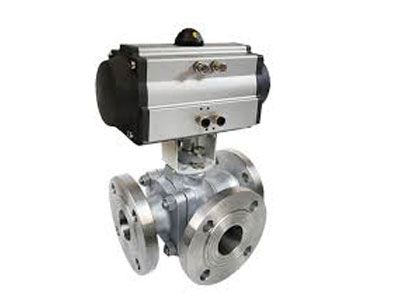Key Takeaway
The working principle of a pressure relief valve (PRV) involves releasing excess pressure from a system to prevent overpressure conditions. When the system pressure exceeds the PRV’s set pressure, the valve opens, allowing fluid or gas to escape, thereby reducing the pressure to a safe level.
PRVs are designed to automatically reset once the pressure returns to normal, ensuring continuous protection. They are essential components in various industries, providing safety and preventing equipment damage by maintaining pressure within safe limits.
Basic Working Principle of Pressure Relief Valves
Pressure relief valves operate on a fundamental principle of force balance between system pressure and spring force. When system pressure exceeds the spring force holding the valve closed, the valve opens to release excess pressure, protecting the system from damage.
The valve’s opening characteristics are determined by its design and configuration. Spring-loaded valves provide direct response to pressure changes, while pilot-operated valves offer more precise control through a pilot mechanism that controls the main valve operation.
Advanced pressure relief valves incorporate features for stable operation and precise control. These include dampening mechanisms to prevent chattering, balanced designs to minimize the effects of back pressure, and adjustable controls for fine-tuning valve response.

Components and Their Functions
PRVs consist of key components such as the valve body, spring, disc, and nozzle. The valve body provides the housing and structural integrity, while the spring determines the pressure at which the valve will open.
The disc acts as a seal to prevent leakage under normal conditions, and the nozzle directs the flow of excess pressure safely away from the system. In pilot-operated PRVs, additional components like the pilot valve enhance precision and control.
Each component plays a critical role in ensuring the PRV’s reliability, safety, and efficiency. Proper maintenance and regular inspections are essential to keep these components functioning optimally.
How PRVs Respond to Pressure Changes
The response of Pressure Relief Valves (PRVs) to pressure changes is what makes them so effective in maintaining system safety. PRVs are designed to react quickly and efficiently to fluctuations in pressure. They continuously monitor the system’s internal pressure and adjust accordingly when the set pressure is exceeded.
Under normal operating conditions, the PRV remains closed. The spring inside the valve holds the valve seat tightly in place, preventing any fluid or gas from escaping. However, as the system pressure builds up and reaches the set pressure, the pressure inside the valve forces the spring to compress. Once the force exerted by the system pressure overcomes the spring force, the valve opens, allowing the excess pressure to escape and maintain a safe operating range.
The rate at which the PRV opens and closes is crucial in preventing damage to the system. If the valve opens too slowly, it could allow pressure to build up to dangerous levels before relief occurs. Conversely, if the valve opens too quickly, it could cause a sudden drop in pressure that might damage the system or cause it to lose efficiency. The balance between responsiveness and control is key in ensuring the PRV operates correctly.
Applications in Various Industries
Pressure Relief Valves (PRVs) have widespread applications across a variety of industries where maintaining safe pressure levels is crucial. These industries rely on PRVs to ensure the safety, efficiency, and longevity of their equipment. Let’s explore some key sectors where PRVs are essential.
1. Oil and Gas Industry: In the oil and gas sector, PRVs are critical for protecting pipelines, storage tanks, and refineries from the dangers of overpressure. The oil and gas industry operates under high-pressure conditions, and pressure relief valves are used to maintain pressure stability within pipelines and processing plants. They prevent blowouts, leaks, and equipment failure, which can be costly and dangerous.
2. Chemical Processing: Chemical plants often deal with reactive and volatile chemicals that can be hazardous if pressure exceeds certain thresholds. PRVs in chemical plants prevent the rupture of vessels and tanks, which could lead to dangerous leaks or explosions. By ensuring pressure is maintained within safe limits, PRVs help avoid costly accidents and keep workers safe.
3. Power Generation: In power plants, PRVs are used to regulate steam pressure within boilers and turbines. Excessive steam pressure can damage the plant’s equipment and lead to catastrophic failures. PRVs ensure that the steam pressure is maintained within safe limits, thus protecting the plant and ensuring the efficiency of power generation processes.
Advantages of Using PRVs
Pressure Relief Valves (PRVs) offer numerous advantages, particularly in industries where managing pressure is crucial to preventing accidents and ensuring the smooth operation of systems. Understanding the benefits of using PRVs is essential for engineers to make informed decisions about their installation and maintenance.
1. Enhanced Safety: The primary advantage of a PRV is its ability to prevent catastrophic failure due to overpressure. By automatically opening when the pressure exceeds a preset level, PRVs reduce the risk of equipment damage, system breakdowns, and potential accidents that could threaten personnel safety.
2. Prevention of Equipment Damage: In many systems, especially in high-pressure industries, excess pressure can cause severe damage to valves, pipes, and tanks. PRVs protect sensitive equipment by relieving the pressure before it can build up to dangerous levels, thus extending the lifespan of the entire system.
3. Improved Operational Efficiency: By maintaining stable pressure within the system, PRVs contribute to smoother operations and prevent energy losses. They help avoid fluctuations in pressure that could lead to inefficient processes or unnecessary system downtimes. As a result, companies can improve productivity while minimizing repair and maintenance costs.
Conclusion
The working principle of a Pressure Relief Valve (PRV) involves releasing excess pressure from a system to prevent overpressure conditions. When the system pressure exceeds the PRV’s set pressure, the valve opens, allowing fluid or gas to escape.
PRVs are designed to automatically reset once the pressure returns to normal, ensuring continuous protection. Understanding their operation is essential for selecting the right PRV for specific applications, ensuring system safety and reliability.
